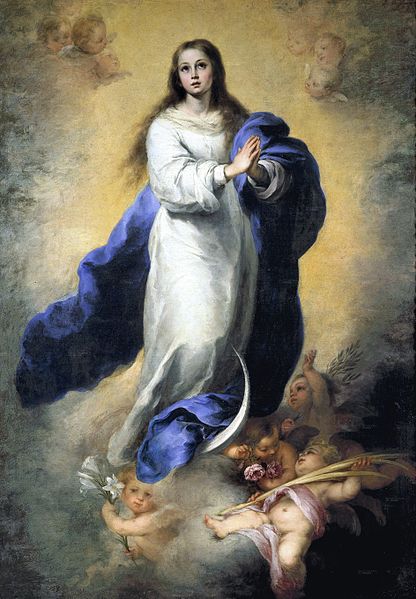The Mariology of the popes is the theological study of the influence that the popes have had on the development, formulation and transformation of the Roman Catholic Church's doctrines and devotions relating to the Blessed Virgin Mary.
Pius IX dogmatized the Immaculate Conception in 1854. (Murillo, The Immaculate Conception of El Escorial, 1660–1665)
Pope Leo XIII
Leo XIII was devoted to Our Lady of Good Counsel, and included her invocation in the Litany of Loreto. This image is by Pasquale Sarullo, the original being in Genazzano, near Rome. Pius XII also placed his pontificate under the maternal care of Our Lady of Good Counsel and composed a prayer to her.
Pope Pius XII
Catholic Mariology is Mariology in Catholic theology. According to the Immaculate Conception taught by the Catholic Church, she was conceived and born without sin, hence Mary is seen as having a singular dignity above the saints, receiving a higher level of veneration than all angelic spirits and blessed souls in heaven. Catholic Mariology thus studies not only her life but also the veneration of her in daily life, prayer, hymns, art, music, and architecture in modern and ancient Christianity throughout the ages.
The Blessed Virgin Mary is depicted in a rose-garden with angels playing music. Roses are a symbol of Mary.
A Christ and Mary, mosaic, Chora Church, 12–14th century. "To Christ through Mary", taught by Louis de Montfort.
Santa Maria Antiqua, in the Forum Romanum, 5th century, seat of Pope John VII
Mary as the Queen of Heaven in Dante's Divine Comedy. Illustration by Gustave Doré.








